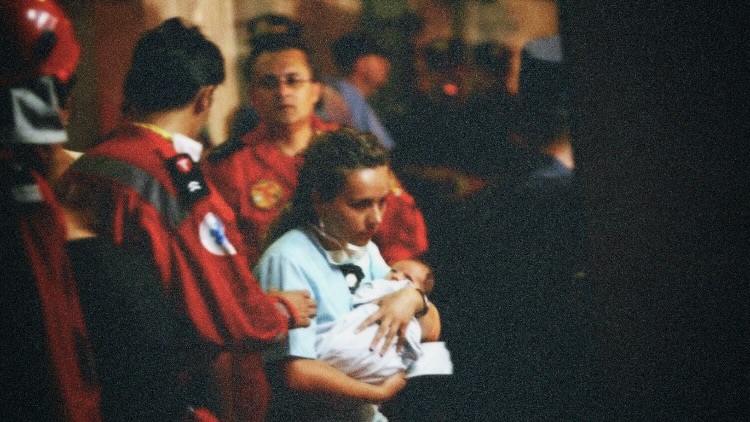| Anda Guinea |
| Architect's Duty Of Care Within The Multifaceted Genealogy Of Romanian Healthcare | A Transposition Of The 20th.c Communist Regime |
| Considering Romania’s political transposition in 1989 and the effect incurred on its healthcare infrastructure, fire outbreaks have magnified the architect’s role in designing facilities that remain flexible and adaptive despite urbicidal disintegration, balancing duty of care with the social right to health amid nepotism and fiscal austerity policies imposed. |
| The functionality of healthcare is paramount in the development of a thriving and equitable society; however, the Romanian public healthcare system presents a stark contrast, presently impaired and qualitatively poor. Infrastructurally Romanian healthcare institutions remain bound to the communist regime, as the 20th century played a foundational role in forming much of the existing built environment which has seen minimal restoration, despite improved expectations concerning living conditions and a current 21st century democratic government. The dissertation investigates Romania’s healthcare crisis through a focused case study: the Clinical Hospital of Obstetrics & Gynecology - Prof. Dr Panait Sarbu located in Bucharest and most notably associated with the ‘The Giulesti Maternity Fire - 2010’, an example of numerous tragedies within the parameters of the healthcare system in which innocent lives continue to be lost. The dissertation uses fires as an analytical proxy to expose the deeper political and economical dysfunctions which facilitates the pinnacle of structural disintegration, highlighting issues such as urbicide, fiscal austerity, bribery, nepotism, economic capital and the mediatisation of the public health crisis. Moreover, the dissertation frames health as a discontinued duty of care, augmenting the extent to which institutional instability is attributed to the country’s political transposition in 1989 and the realities which have been incurred or inherited. In response, the study culminates with the proposed deployment of the Open Building and System Separation methodological frameworks, models which imply that structurally adaptive and strategically planned healthcare environments could present greater resilience towards the effects of direct or indirect systemic urbicide. If healthcare infrastructure continues to deteriorate, through structural integrity failures and numerous fire related crises, this poses a profound fissure inflicted on societal integrity, whereby the disintegration of hospitals signals the withdrawal of health + (care) from the necessity of human condition, leaving urbicidal annihilation to persist unimpeded. |





| 1. ‘Sanatatea Care Ne Arde’ / ‘Health That Burns Us’ Campaign Poster Graphics By Context.ro Source: Context, (2023), ‘INTERACTIVE How old is the electrical network in your hospital’, [online], available at: https://context.ro/interactiv-cat-de-veche-e-reteaua-electrica-din-spitalul-tau/ 2. Photograph from the ‘Giulesti Maternity Fire - 2010’ evacuation Source: Stiri de Cluj, Carbune.D, (2010), ‘Images from the fire at the Giulesti maternity hospital’, [online], available at: https://www.stiridecluj.ro/national-international/imagini-din-incendiul-de-la-maternitatea-giulesti-personalul-medical-nu-face-nimic-pentru-a-i-salva-pe-bebelusi-video 3. Archival Scanteia (‘The Spark’) 1984-07-24 Newspaper Extract [1] Translation | Heading: ‘‘101 new hospitals, built during the socialist years, in all counties of the country” Source: Arcanum Newspapers, 'Scanteia, 1984-07-24 / nr. 13037', [online], available at: https:// adt.arcanum.com/en/view/Scinteia_1984_07/?pg=115&layout=s 4. Archival Scanteia (‘The Spark’) 1984-07-24 Newspaper Extract [2] Translation | Heading: “Extensive expansion of the material base of health” Graphics: “Number of Beds in Hospital Units” Description: “INCREASING THE CAPACITY OF THE MEDICAL CARE NETWORK - During the years of socialism, 101 new large-capacity hospitals were built, equipped with modern equipment. Today, new hospitals are operating in all counties of the country. The number of dispensaries and polyclinics has increased from 1,276 in 1938 to over 6,200 this year” Source: Arcanum Newspapers, 'Scanteia, 1984-07-24 / nr. 13037', [online], available at: https:// adt.arcanum.com/en/view/Scinteia_1984_07/?pg=115&layout=s 5. Archival Scanteia (‘The Spark’) 1984-07-24 Newspaper Extract [3] Translation | Heading: “This year, 16.6 billion lei for free medical care” Graphics: “AMOUNTS SPENT FROM THE STATE BUDGET FOR HEALTH ACTIVITY” Description: “The annual funds currently allocated are equivalent to those from the entire decade 1951-1960. For the protection of the health of each inhabitant, the state annually allocates almost 780 lei, compared to only 40 lei in 1950 and 252 lei in 1965. The allocation of increased funds allowed the endowment of health units with modern means of investigation, diagnosis and treatment” Source: Arcanum Newspapers, 'Scanteia, 1984-07-24 / nr. 13037', [online], available at: https:// adt.arcanum.com/en/view/Scinteia_1984_07/?pg=115&layout=s |